Browse the Collection
Browsing 10 items in our archive
-
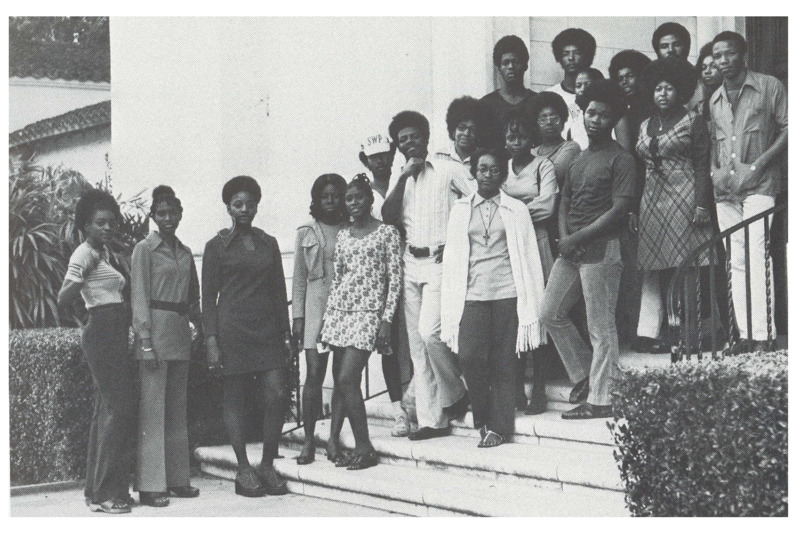 Rollins College | Image
Rollins College | ImageBlack Student Union, 1972-1973
Twenty Black Student Union members pose for their student organization’s yearbook photograph. This is the first Black Student Union photograph included in the Tomokan yearbook. Back row: Krisita Jackson, Theda James, Deborah Coleman, Brenda Martin, Reggie Brock, Blanche Jackson, Lonnie Butler, Otis Cameron, Rodney Dowling. Middle row: Lorraine Powell, Marcus Wilson, Grace Borom, Juanita Gibson, Jennifer Matthews, Roxwell Robinson, Arlinda Staley. Front row: Guilda Brandon, Theotis Bronson, Constance Blackman, Errol Cunningham.Learn more -
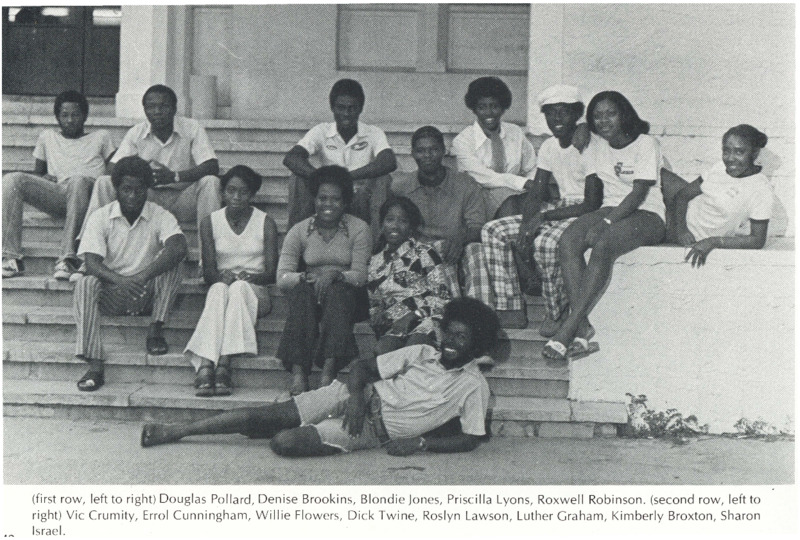 Rollins College | Image
Rollins College | ImageBlack Student Union, 1974-1975
Thirteen members of the Black Student Union gather for their yearbook photo. They are seated on the steps of Bush Science Center. (First row, left to right): Douglas Pollard, Denise Brookins, Blondie Jones, Priscilla Lyons, Roxwell Robinson. (Second row, left to right): Vic Crumity, Errol Cunningham, Willie Flowers, Dick Twine, Roslyn Lawson, Luther Graham, Kimberly Broxton, Sharon Israel.Learn more -
 Rollins College | Image
Rollins College | ImageBlack Student Union, 1975-1976
Fourteen Black Student Union members pose for their student organization’s yearbook photograph. (First row, left to right): Blondie Jones, Priscilla Lyons, Debbie Mitchell, Kim Broxton, Denise Brookins, Rosalyn Lawson. (Second row, left to right): Aaron Spencer, Roxwell Robinson, Tim Graddy, Dirk Twine, Willie Hicks, Victor Crumity, Doug Pollard, Luther Graham.Learn more -
 Rollins College | Image
Rollins College | ImageBlack Student Union, 1976-1977
(First row, left to right): Sharon Israel, Kim Broxton, Debbie Mitchell, Roslyn Lawson, Blondie Jones, Denise Brookins, Gloria Allen. (Second row, left to right): Victor Crawford, Clyde Clark, Thomas Francis, Gigi Morgan, Luther Graham, Rodney Akins, Kirk Twine. Fourteen Black Student Union members gather around a sofa for their yearbook picture. This is the fourth such yearbook photograph of Black Student Union members gathered for their student organization picture.Learn more -
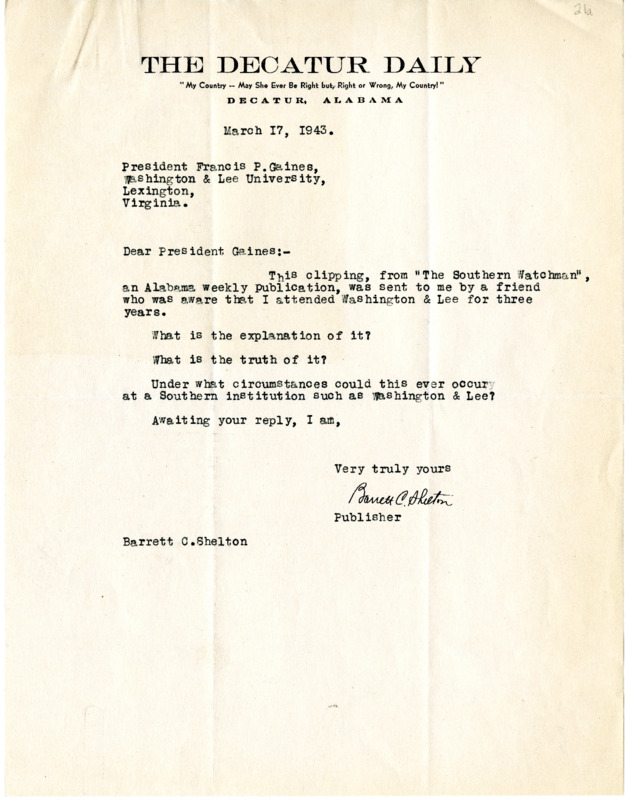 W & L University | Text
W & L University | TextLetter from Barrett C. Shelton to Francis P. Gaines (March 17, 1943)
In this letter with enclosed clipping from the Southern Watchman, Publisher Barrett C. Shelton asks President Francis P. Gaines about Black W&L graduates. Gaines responds.Learn more -
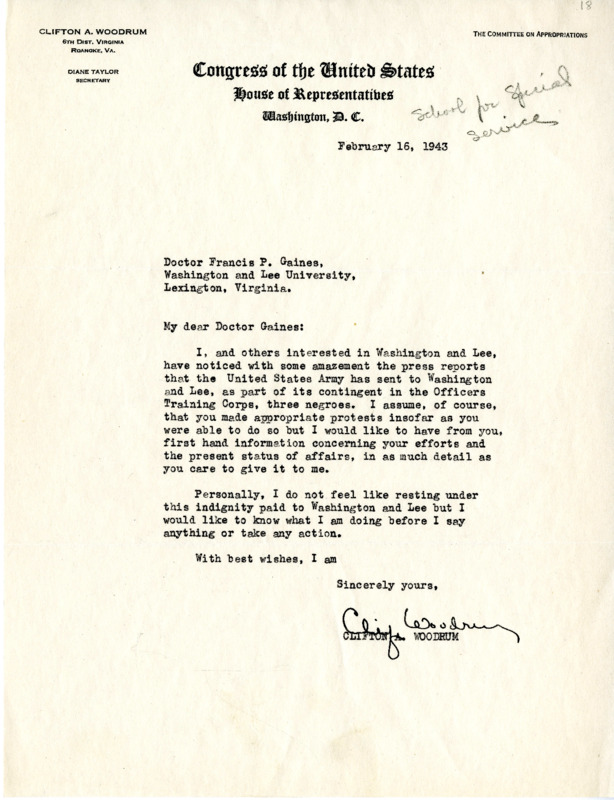 W & L University | Text
W & L University | TextLetter from Clifton A. Woodrum to Francis P. Gaines (February 16, 1943)
In this letter from U.S. Congressman and W&L Law Alumnus Clifton A. Woodrum to President Francis P. Gaines, Woodrum asks Gaines about three Black students sent to the Officers Training Corp at Washington and Lee.Learn more -
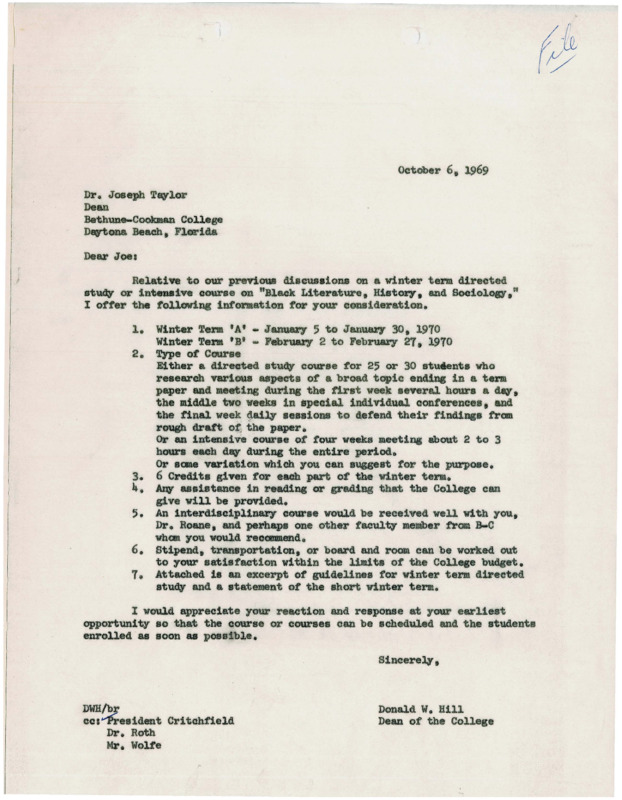 Rollins College | Text
Rollins College | TextLetter from Donald W. Hill to Joseph Taylor, 1969
The administration responds to student demands for more Black studies by creating a winter term course on "Black Literature, History and Sociology." The Dean of Rollins College consulted the Dean of Bethune-Cookman College on the structure and content of the course, demonstrating continued cooperation between the two institutions.Learn more -
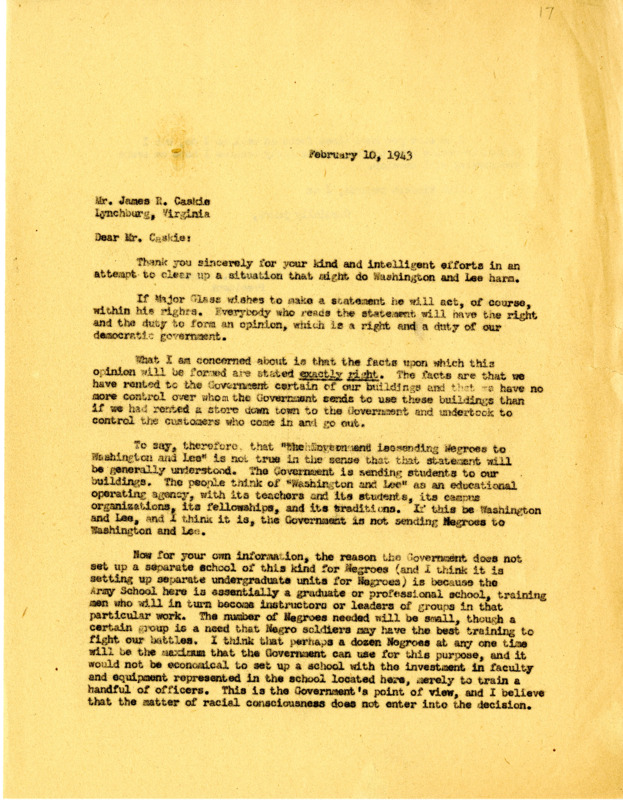 W & L University | Text
W & L University | TextLetter from Francis P. Gaines to James R. Caskie (February 10, 1943)
In this letter from President Francis P. Gaines to Trustee James R. Caskie, Gaines and Caskie discuss the public's perception of the possibility of Black students being present on Washington and Lee's campus through the U.S. Army School.Learn more -
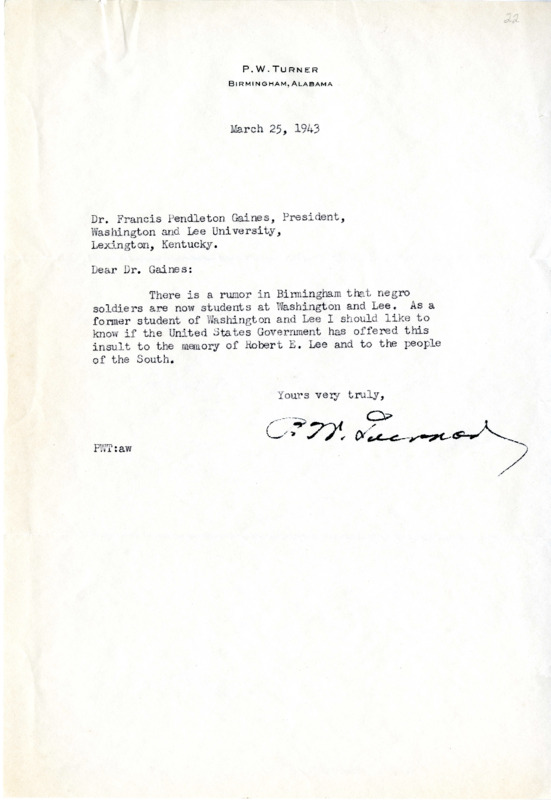 W & L University | Text
W & L University | TextLetter from P. W. Turner to Francis P. Gaines (March 25, 1943)
In this letter from P. W. Turner to President Francis P. Gaines, Turner asks about the presence of Black students at Washington and Lee.Learn more -
 Rollins College | Text
Rollins College | TextRoxwell Robinson and Jack B. Critchfield Correspondence, 1974
Black Student Union President Roxwell Robinson writes to President Jack Critchfield, requesting that the College offer at least three Black Culture courses per academic year, even in the face of financial difficulty. President Critchfield responds that he cannot make a guarantee, but that he and the administration intend to preserve Black Culture courses in the curriculum.Learn more
